This Minor Archeological Find Over Two Decades Ago Ended Up Being of Significant Historical Value
An archaeological item unearthed in Great Britain over two decades ago has left researchers astounded. Initially dismissed as a mere rusty bucket, further inspection revealed it to be a relic from Rome’s occupation of the island, a discovery that has since captivated the archaeological community.
The item was dug up in an English field nearly 20 years ago. It sat collecting dust until it was eventually examined by an expert, who was shocked to discover it was an ancient Roman helmet worn by a soldier of the Empire when southern England was known as the Roman province of Britannia.
Roman Province of Britannia
The Roman Empire expanded far beyond its native land of Italy and conquered vast swaths of land from Britain in the west to Iran in the East. While it failed to hold any significant territory in the latter, the Empire did control most of Southern Britain for almost four centuries.
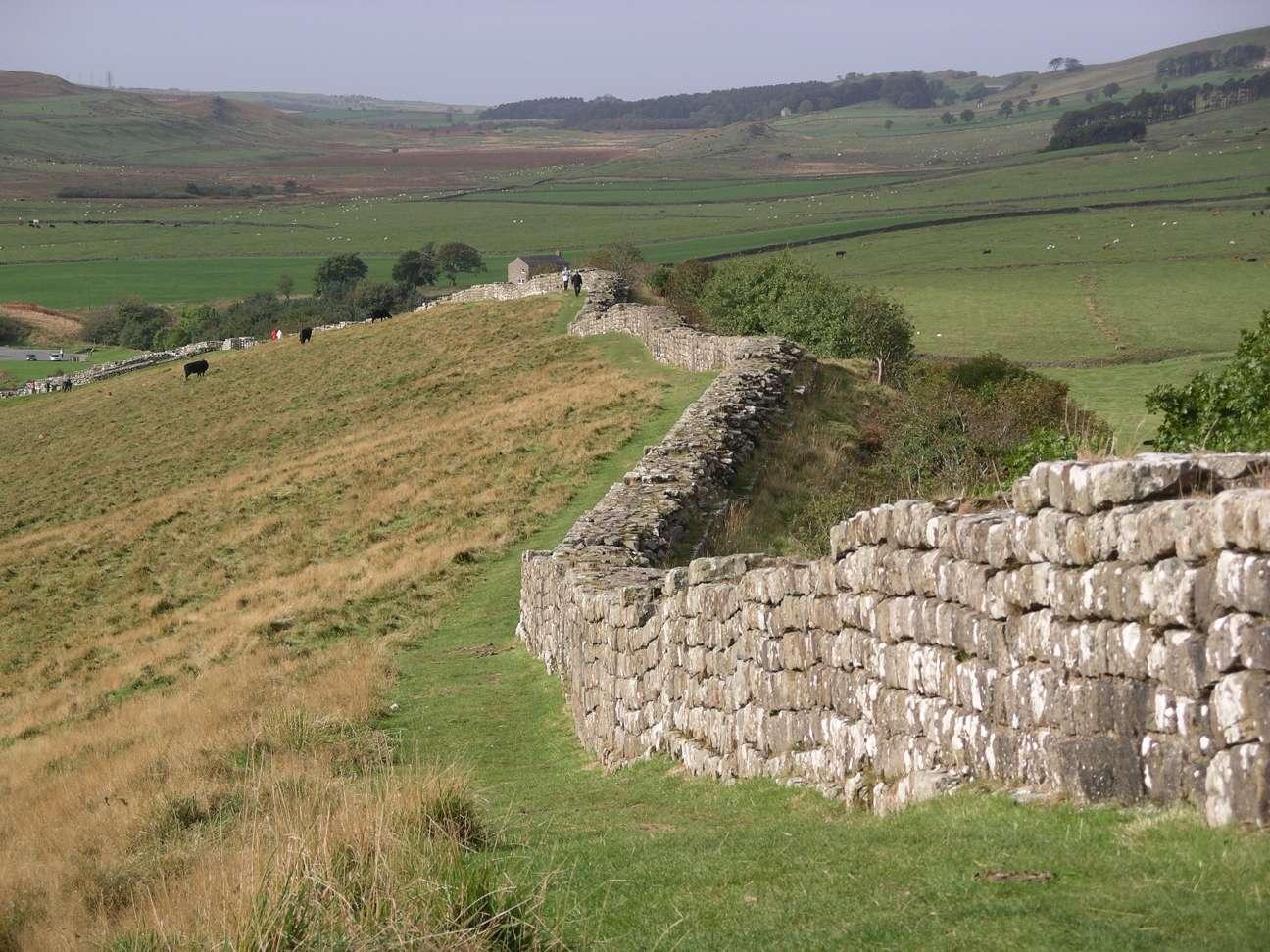
Source: Wikimedia
During this time, the Romans engaged in numerous battles against the native ethnic groups living on the island, including the Britons and Picts. These battles, alongside the extensive Roman settlements, have resulted in numerous archaeological finds over the years, many of which are credited for their craftsmanship and beauty.
Roman Finds in Britain
While the native peoples of Britain had been experts in metallurgy for nearly two thousand years before the Romans arrived, their styles were vastly different in many respects, making it easy for archaeologists to discern one culture from the other.

Source: Wikimedia
More often than not, archaeologists can identify a Roman artifact with ease when it’s unearthed in Britain. However, this was not the case for a chunk of metal pulled from the ground over twenty years ago.
A Relic From the Roman Empire
Over two decades ago, archaeologists from the Hallaton Fieldwork Group and the University of Leicester Archaeological Services had been working near Market Harborough in Leicestershire, England, when they encountered a strange metal item.
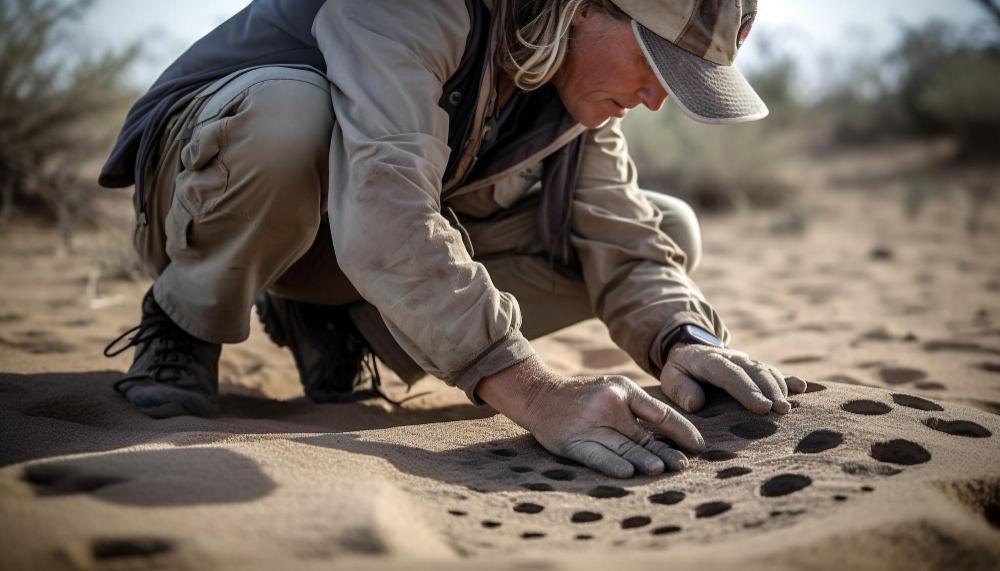
Source: Freepik
As the piece was badly deteriorated, it proved challenging for researchers to fully assess its significance, and it was eventually dismissed. However, analysis at a later date left researchers stunned, because it was a relic that was nearly 2,000 years old, according to Smithsonian Magazine.
The Hallaton Helmet
The metal artifact was a helmet, a significant piece of history likely worn by a cavalry officer in the Roman army during the height of the Empire’s reign over southern Britain. The artifact was later named the “Hallaton Helmet” in honor of the religion in which it was discovered, a testament to its historical importance.
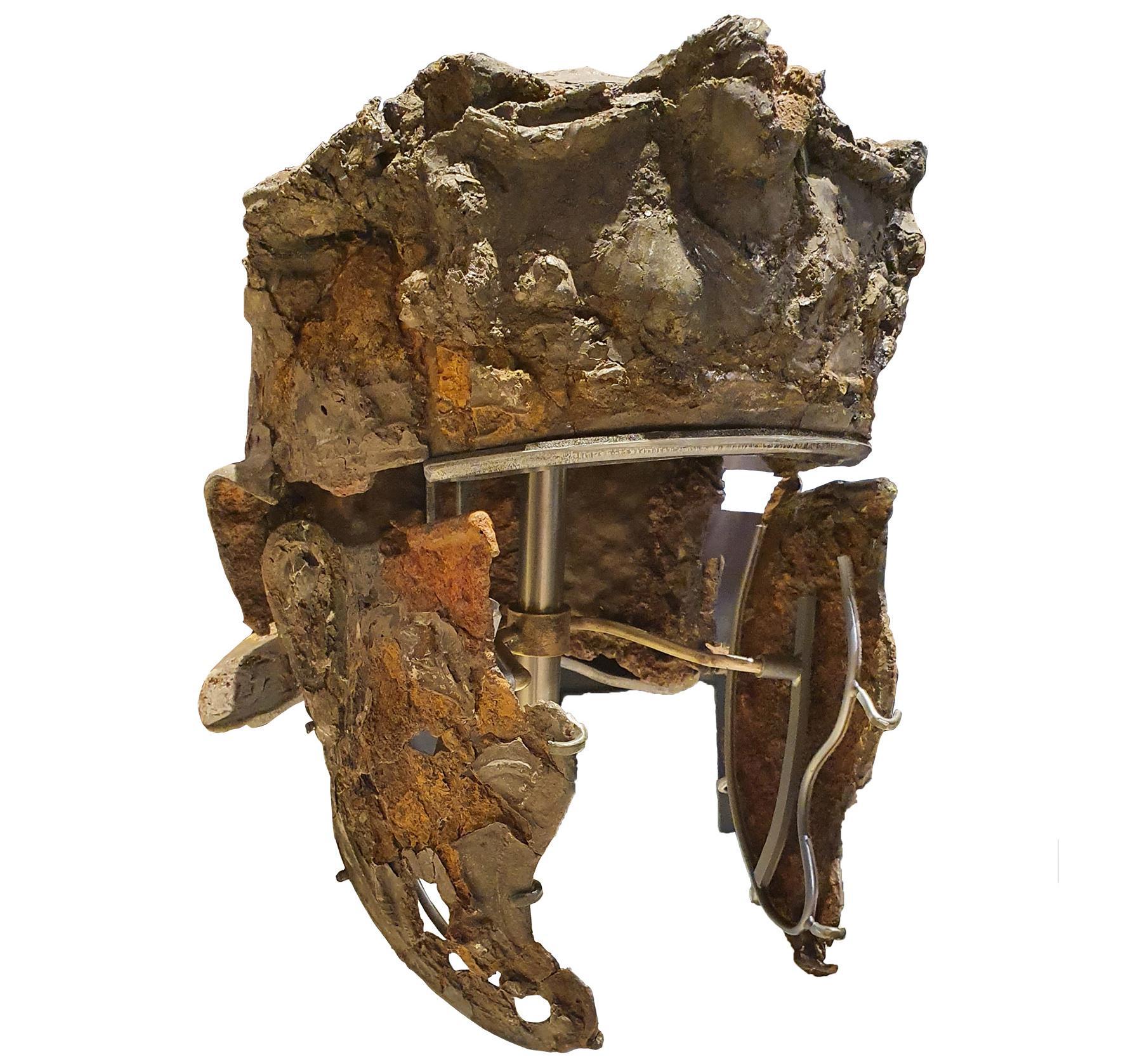
Source: Leicestershire Collections
A short description of the helmet, sourced from the Leicestershire Collection, reads as follows: “Silver-gilt repoussé over iron, early 1st century AD. The helmet’s brow guard features an imposing female bust flanked by lions.”
Years of Painstaking Reconstruction Work
Before the item could be proudly displayed at the Harborough Museum, a team of dedicated specialists embarked on a painstaking journey of restoration. Their meticulous work aimed to bring the helmet back to life.
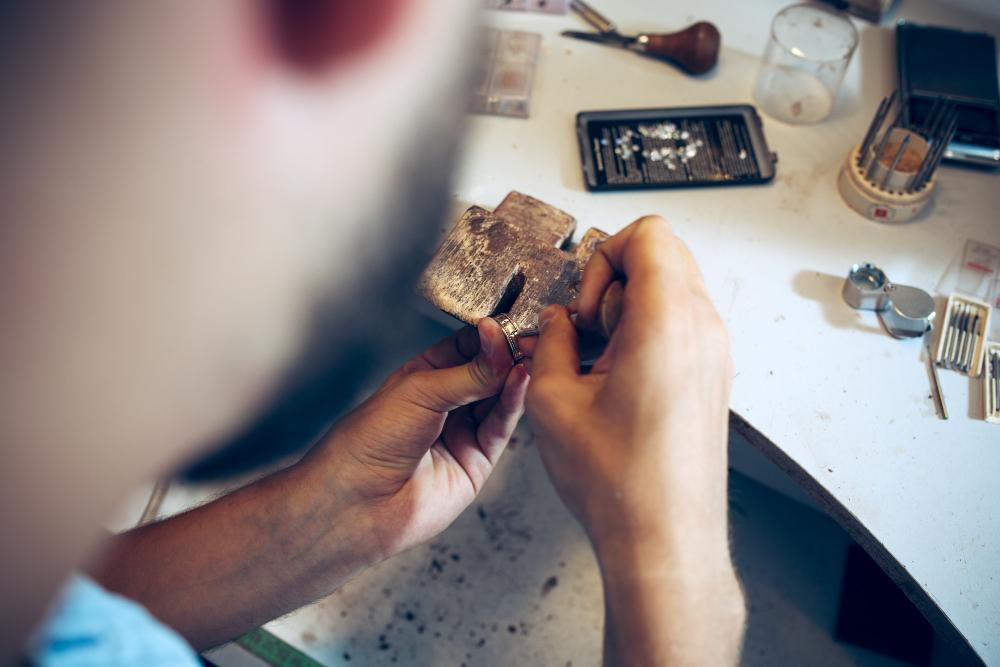
Source: Wikimedia
According to a statement from the Leicestershire County Council, the specialists conducted “years of painstaking reconstruction work,” which has given the item a new lease on life.
Hallaton Helmet Goes on Display
Christine Radford, a local cabinet member, shared her thoughts on the return of the item during the statement. “We are excited to have the Hallaton Helmet back with us at Harborough Museum for people to view,” she said.
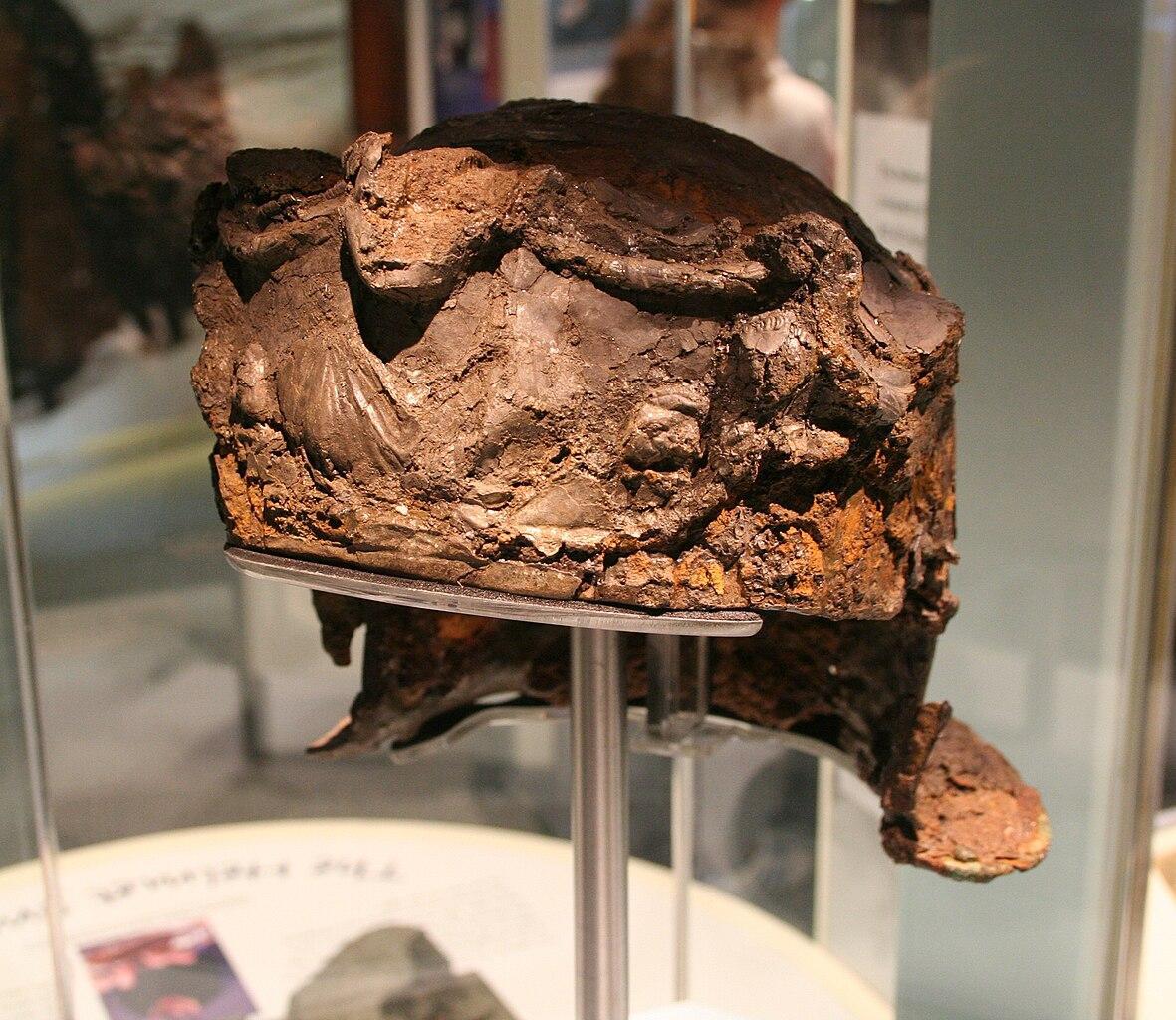
Source: Wikimedia
Radford continued, “This re-display would not be possible without the amazing conservation and reconstruction work [that] has been undertaken.”
Councillor Gives Praise to the Museum
Radford then spoke on the collective efforts of everyone involved in the artifact’s restoration, crediting everyone who contributed to bringing the ancient item back to life.

Source: Wikimedia
“There has also been a lot of behind-the-scenes work from the staff in the Museum Service, who have created lots of content to tell the story of the helmet and its discovery. I do hope you all get the chance to head down to the museum to experience this historic artifact,” she said.
Roman Helmet is Restored to 80% Perfection
According to Artnet’s Adnan Qiblawi, specialists from the British Museum of London meticulously restored the officer’s helmet “to approximately 80 percent completion.”
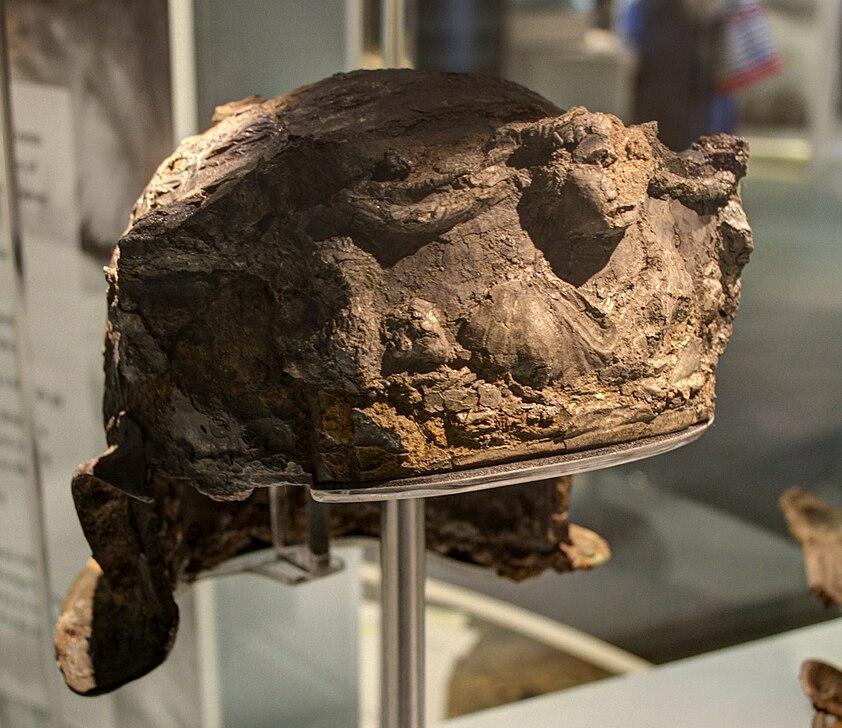
Source: Wikimedia
The helmet’s remains include seven cheekpieces, a bowl, and numerous fragments, most of which are intricately decorated with Roman-era motifs. On the brow guard, a figure is flanked by lions, while the cheekpieces boast an image of the goddess Victory.
The Rarity of the Roman Helmet
Speaking with BBC News’ Greig Watson, Helen Sharp, curator of archaeology at Leicestershire County Council museums, said, “It is one of a handful of silver-plated helmets ever found in Europe.”

Source: Wikimedia
He continued, “It is extremely high status; it would have been worn by an extremely high-status officer, and it just shows how well connected the Leicester area was at the time.”
The Hallaton Collection
The Roman helmet discovered in Hallaton is part of a larger collection of artifacts known as the “Hallaton Treasure.” The hoard consists of over 5,000 gold and silver coins, silver ingots, silver bowls, and numerous animal bones.

Source: Wikimedia
According to the county council statement, now that the helmet is on display at the Harborough Museum, “all of the key finds” will be together for the first time.
Two Replicas Accompany the Helmet
Alongside the Roman helmet are two replicas that aim to portray how the artifact would have looked during Rome’s occupation of Britain. The first was created by a Leicestershire silversmith, Rajesh Goga. Whereas the second was handcrafted by Francesco Galluccio, an Italian archaeologist.
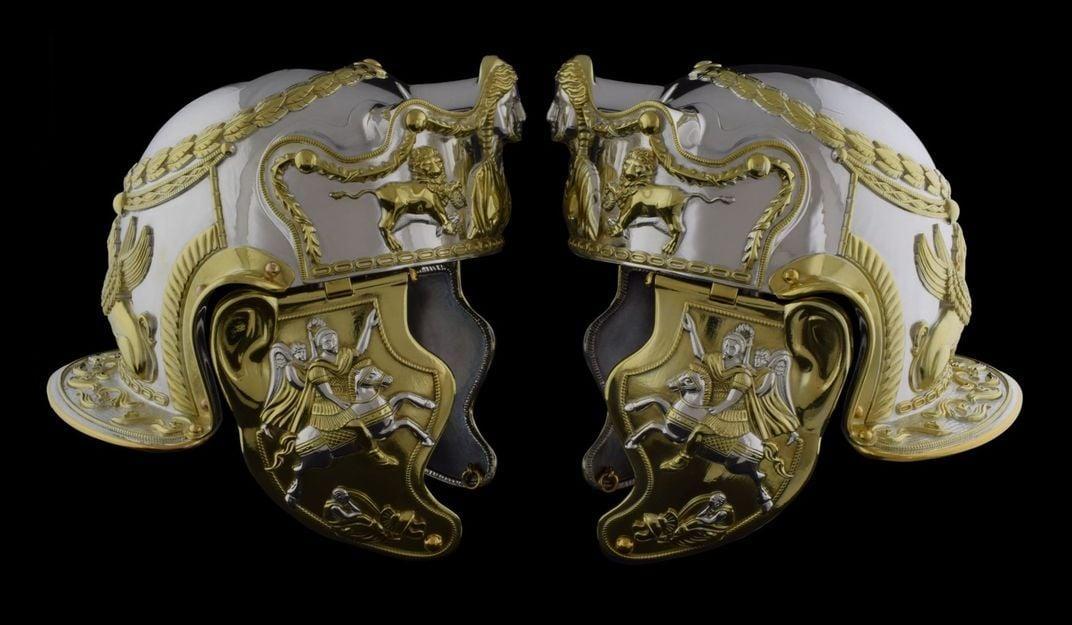
Source: Leicestershire County Council Museums
“The work started over a year ago and was carried out with intense and continuous collaboration with the museum’s management, succeeding in creating an incredible result,” Galluccio told BBC News. “The reconstruction is based only on the actual existing pieces.”
